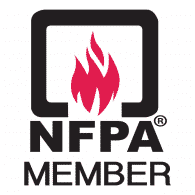How We Utilize PHOS-CHEK
Frequently Asked Questions
Why is the Fire Retardant not pink like the ones dropped off airplanes?
The fire retardant we utilize is PHOS-CHEK, which is the same ones dropped off the airplanes without the pink dye. The pink dye is for the fire fighting teams to see and locate which areas have fire retardants applied. If it was clear, the fire team will have a hard time distinguishing which areas have fire retardants applied.
Is the Fire Retardant safe to use around vegetation?
Yes! The LTR is actually a fertilizer and safe to use around vegetation. The product has gone through strict testing protocols administered by the US Forest Service and is fully approved for use throughout the USA.
Where do you spray the Fire Retardant?
Depending on your property, generally we want to spray the first 0-30 feet (the intermediate zone) of your home. With larger properties with a lot of vegetation, we recommend vegetation management and additional application of fire retardants up to 100 feet of the property.
Will FORTIFY change the color of my vegetation?
Yes, the application of FORTIFY fire retardant will coat and protect your vegetation and will leave behind a light white color film.
Do you spray Fire Retardant onto the home itself?
We spray within the first 5 feet of the home onto any vegetation that may pose a threat. The home itself should be built with fire resistant material and other home hardening solutions like ember proof vent guards and gutter guards. We conduct a home risk assessment to provide you with the best plan of action all around.
Can I water my plants when fire retardant is applied?
We recommend drip hoses or drip lines to water the roots without washing off the retardants. Sprinklers and hand watering will reduce the effectiveness of the
long-term fire retardant prematurely. Caution should be exercised to not directly spray the foliage of treated vegetation; instead, watering only around the base of plants and soaker hoses will ensure true long-term protection from fire.
What is defensible space?
Defensible space is a buffer between your home and the vegetation that surrounds it. This helps to slow or stop the spread of wildfire and provides firefighters a safe area to defend your home.
What is home hardening?
Flying embers from a wildfire can destroy homes up to a mile away. Home hardening is the process of protecting openings and using ember-resistant materials such as fire-resistant vents, gutter guards and double pane window glass to increase the likelihood of survival when wildfire strikes.



Contact Us
- 310-620-9442
- 3120 E. Garvey S. West Covina CA 91791
- 24 Hour Emergency Disaster Service
- NFPA Member
